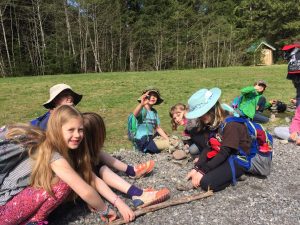This was not an uninhabited wilderness before miners explored the valley in search of gold. The miners first arrived merely one hundred and fifty years ago. The Willamette valley and the surrounding drainages are predicted to have had a human presence for roughly ten thousand years. When European explorers arrived in this valley it was occupied by a people known as the Kalapuyans. And it was not the Willamette valley, but the Walama.
Diseases, brought on ships from Europe unwittingly, killed the majority of the Kalapuyans. Five to six thousand died in 1836-1837. A tragedy of epic proportions to say the least. This quote reflects on the consequence of the disease, “The Indians as an effective social and biological organism were destroyed in the lower valleys of the Columbia and Willamette rivers. As a result, the advancing tide of white settlement met with little or no resistance from the demoralized survivors.” (Cook 1955)
Although vast trade networks did exist in North America, The Kalapuyans met most of their needs using local resources. Flowing with the seasons, the Kalapuyans spent winters in small family groups at low elevations in the Willamette valley. During summers, family groups would join to form large bands and move to higher elevations to collect the variety of mountain plants and animals. One of the sites where the Kalapuyans made their summer camps is where I currently live and teach: Jawbone Flats. As the name suggests this is a large flat area right next to the confluence of two major rivers. I teach in a meadow that was originally burned out by the Kalapuyans to create open space and it is my urgent responsibility to teach my students about alternatives to our current model of resource management. I am actively learning and teaching about how the plants can be used and how they might have been used in the past by the Kalapuyans and their ultimate local economy.

Sources:
- Cook, S.F., The Epidemic of 1830-33 in California and Oregon, University of California Publications in American Archaeology and Ethnology 43(3):303-326, 1955
- Mackey, Harold. The Kalapuyans: a sourcebook on the Indians of the Willamette Valley. Salem, Or.: Mission Mill Museum Association, 2004. Print.